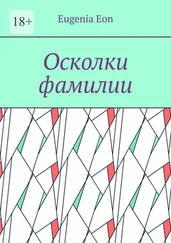Bronisław Młynarski Buzuluk, 1 XI 1941
Captain Józef Czapski’s Report
Memorandum on the missing Polish prisoners of war, formerly interned at Starobelsk, Kozelsk and Ostashkov.
The prisoners of war who were interned at these camps from 1939 to April 1940, and who numbered 15,000, including 8,700 officers, have not reported to the Polish authorities, nor do these know anything of their present whereabouts, except for 400–500 persons, or about 3% of the total number of the internees of these three camps, who were released in 1941 from Griazovets near Vologda or from various prisons, after a year’s imprisonment.
Camp No.1 at Starobelsk
Parties of prisoners arrived here during the period 30 IX 1939 to 1 XI 1939. The winding up of the camp began on 5 IV 1940, when the strength was 3,920, including 8 Generals, over 100 Colonels, about 250 Majors, 1,000 Captains, 2,500 Subalterns, 30 Cadets and 50 civilians. Over half of the officers were professional soldiers and the prisoners included 380 doctors and many university professors.
Camp No.2 at Kozelsk
The strength on the day of liquidation (3 IV 1940) was about 5,000, including 4,500 officers of various ranks and services.
Camp [No.3] at Ostashkov
The strength at the time of liquidation was 6,570, including 380 officers.
Liquidation of Starobelsk camp
The first group of 195 persons was sent away on 5 IV 1940. The Soviet Commandant [Aleksandr] Berezhkov, [in charge of the camp] and the Commissar [Mikhail] Kirshin, [who ‘cleared out’ the camp] officially assured the prisoners that they would be sent to a distribution centre from whence they would be taken to their domiciles in German and Soviet-occupied Poland. We know with absolute certainty from numerous letters received from Poland during the winter of 1940-41 that up till now, not one of the former internees of the three camps in question has returned to his home in Poland. Up to 26 IV 1940 inclusive groups from 65 to 240 persons were sent from the camp. On 25 IV 1940 a group of over 100 persons were instructed to get ready to leave, after that a special roll of 63 names was read; these persons were to constitute a separate group during the march to the railway station.
The next party of 200 left the camp on 2 V 1940 and the remaining prisoners left in small groups on May 8th, 11th, and 12th. The last group was sent to Pavlishchev Bor (Smolensk district), where they joined the special group of 63 sent from Starobelsk on 25 IV 1940. There were thus 79 officers from Starobelsk at this camp and they were released from Griazovets in 1941. In addition seven officers who had been taken from Starobelsk to various prisons were released. The total number accounted for is thus 86, being just over 2% of the total strength of 3,920.
Liquidation of the Kozelsk and Ostashkov camps
This was effected in a similar way. The camp at Pavlishchev Bor contained 200 officers from Kozelsk and about 120 persons from Ostashkov; these figures represent about 2% of the respective strength of these camps.
Griazovets camp
After a month’s stay at Pavlishchev Bor, the inmates, numbering about 400, were transferred to Griazovets near Vologda. To this camp were also sent 1,250 officers and other ranks who had previously been interned in the Baltic Republics and who had been kept as internees (not prisoners of war) in no.2 camp at Kozelsk, from the autumn of 1940 to the summer of 1941.
The Griazovets camp is the only camp containing a majority of Polish Army officers known to us to have existed in the USSR from June 1940 to September 1941. Practically the entire strength of this camp is now part of the Polish Army in the USSR.
Six months have now elapsed since an amnesty was proclaimed for all Polish prisoners of war and other prisoners on 12 VIII 1941. Since that date, a steady stream of officers and other ranks of the Polish Army have been reporting to their H.Q. from various camps and prisons. In spite of the proclamation of this amnesty, notwithstanding the categorical promise that our prisoners of war would be released, made by the Chairman of the Council of People’s Commissars, M. Stalin to H.E. [His Excellency] Ambassador Kot on 14 XI 1941 and in spite of the categorical order given by Stalin in the presence of Generals Sikorski and Anders on 3 XII 1941, that the former inmates of the camps in question should be sought out and released, not one of them has yet returned (with the exception of the Griazovetz group). Nor has any communication as yet been received from any of these prisoners.
Interrogation of thousands of prisoners released from very numerous prisons and camps has not elicited any trustworthy information as to the location or fate of these prisoners, except for reports received at second hand. These are:
a. Six to twelve thousand officers and NCOs were sent to Kolyma via Bukhta Nakhodka in 1940.
b. Over 5,000 officers were sent to the mines of Franz Joseph Land.
c. That they were sent to Novaia Zemlia, Kamtchatka and Tchukotka; that during the summer of 1941, 630 officers from Kozelsk were working 180 kilometres distant from ‘Piostroy Dzesva’, that 150 men in officers’ uniforms were seen to the North of the Soava River, near Gari, that Polish officer PoWs were taken in huge barges drawn by tugs (1,700–2,000 men per barge) to the Northern Islands and that three such barges sank in the Barents Sea.
Not one of these reports has been confirmed, although those suggesting Kolyma and Northern Islands seem to us to be the most probable.
We know how carefully the registration of each prisoner was conducted, and how the dossier of each prisoner, complete with questionnaires, interrogations, photographs, etc., was kept in a special file and we know with what meticulous care all the records were kept by the NKVD. We cannot for these reasons believe that the present location of 15,000 prisoners, including over 8,000 officers, is not known to the higher authorities of the NKVD.
In view of the solemn promise made by M. Stalin, and of his categorical order that the fate of the prisoners should be elucidated, may we not hope that we shall be informed of the present whereabouts of our comrades, or, if they are no longer alive, at least that we should be told where they died and in what circumstances they lost their lives.
Number of officers missing:
Total strength of Prisoners of War at Starobelsk on 5 IV 1940 (excluding 30 cadets and 50 civilians): 3,820
Total strength of the Kozelsk camp on 6 IV 1940 was 5,000 (including officers): 4,500
Total strength of Ostashkov camp on 6 IV 1940 was 6,570 (including officers): 380
Total: 8,700
Reported to the Polish Army from Griazovets and various prisons: 500
Total missing officers from Starobelsk, Kozelsk and Ostashkov: 8,200
All of the present officers of the Polish Army in the U.S.S.R. on 1 I 1942, numbering about 2,300, are ex-internees from the Baltic countries, but are, with the exception of the above mentioned 500, not ex-prisoners of war.
It is impossible for us to present an exact estimate of the number of such prisoners still missing, excluding the case of the three officer camps under discussion. In accordance with the decision made by M. Stalin and General Sikorski, the strength of our Army in the U.S.S.R. has been increased. As a result the need for these officers is being felt increasingly urgently, the more so as these were our most highly qualified military specialists.
Moscow, 2 February 1942
Czapski would not have known that amongst the 4,500 prisoners at Kozielsk – which held four generals, one admiral, about 100 colonels and lieutenant colonels, 300 majors, 1,000 captains, 2,500 lieutenants and second lieutenants and over 500 sergeants – that there was one woman officer, Second Lieutenant of the Polish Air Force, pilot Janina Lewandowska, daughter of General [Józef] Dowbór-Muśnicki. She had married pilot instructor Lt Col Mieczysław Lewandowski in the summer of 1939. He managed to reach France, then England, to serve as an RAF pilot. She was shot down over Russian territory in September 1939 while in action and was taken to Kozelsk camp. According to statements of those who survived, she had a separate room and was often castigated by the NKVD guards for attending forbidden religious meetings. Her two airmen friends, with whom she was in close touch, were on an earlier list of the condemned to be evacuated into the unknown and she confronted the guards beseeching them to take her as well. A few days later, dressed in male uniform, pilot Janina Lewandowska joined her dead friends in the Katyn woods. [20] Zbrodnia katyńska w świetle dokumentów (Katyn massacre in the light of documents) Gryf publication, London 1962 p.30. The story is based on recollections of Dr Wacław Mucho who survived Kozelsk.
Читать дальше












